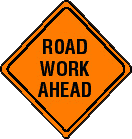Work zone driving tips
May 10, 2013 | Category: Automobile Accidents | Share"Driving in work zones is different from driving elsewhere," says Florida Accident Attorney, Randall Spivey, Spivey Law Firm, Personal Injury Attorneys, P.A.
Following are some facts and recommendations from The Federal Highway Administration in Creating Safer Work Zones: Improving Operations on Both Sides of the Barrel :
FACTS:
- During the past 5 years in work zone crashes more than:
- 4,400 persons died (85% of whom was the driver or passenger)
- 200,000 persons were injured
- Drivers are the most frequent fatality in work zone crashes.
- Most work zone fatalities involve working-age adults.
- Rear-end crashes (running into the rear of a slowing or stopping vehicle) are the most common type of work zone crash.
- Fatal work zone crashes occur most often in summer and fall.
- The majority of fatal work zone crashes occurred on roads with speed limits greater than 50 mph.
- Stopping distance for motor vehicles at 50 mph:
- Dry roadway ~ 300 ft.
- Wet roadway ~ 400 ft.
- Icy pavement ~ 1,250 ft.
- A loaded 80,000 lb. tractor-trailer requires almost 50% more stopping distance.
- It takes only an extra 25 seconds to cover 1 mile at 45 mph compared to 65 mph.
RECOMMENDATIONS:
Follow posted signs:
Road work is just ahead. Be prepared for unusual driving conditions.

Traffic is traveling in both directions on a roadway that is normally one way. Be alert for oncoming traffic.

Traffic needs to follow this vehicle to get safely through the work zone.

A lane is about to end, requiring you to merge into the adjacent lane. The "bent" lane shows which lane is ending.

A flagger is ahead. Be prepared to stop and/or follow instructions.

You will need to take an alternate route soon.

You have reached the end of the work zone. Resume normal, safe driving.
The Florida Department of Transportation in, "It's everyone's job" campaign offers the following tips for drivers when driving in a work zone:
- Be Alert - Expect anything to occur when entering a work zone.
- Don't Tailgate - Unexpected stops frequently occur in work zones.
- Don't Speed - Note the posted speed limits in and around the work zone.
- Don't Change Lanes in the Work Zone - Any time saved just isn't worth the chance.
- Minimize Distractions - Avoid changing radio stations and other distractions.
- Expect the Unexpected - Keep an eye out for workers and their equipment.
"Roads in Collier, Charlotte and Lee Counties are always 'under construction'. Knowing what to do in work zones will make these areas safer for drivers and workers," says Attorney Spivey.
Florida Accident Attorney, Randall L. Spivey is a Board Certified Civil Trial Attorney – the highest recognition for competence bestowed by the Florida Bar and a distinction earned by less than 2 percent of Florida attorneys. He has handled over 1,500 personal injury and wrongful death cases throughout Florida. For a free and confidential consultation to discuss your legal rights, contact the Spivey Law Firm, Personal Injury Attorneys, P.A., in Lee County at 239. 337.7483 or toll free at 1.888.477.4839, or by email to Randall@SpiveyLaw.com. Visit SpiveyLaw.com for more information. You can contact Spivey Law Firm, Personal Injury Attorneys, P.A. in Charlotte County at 941.764.7748 and in Collier County 239.793.7748.


